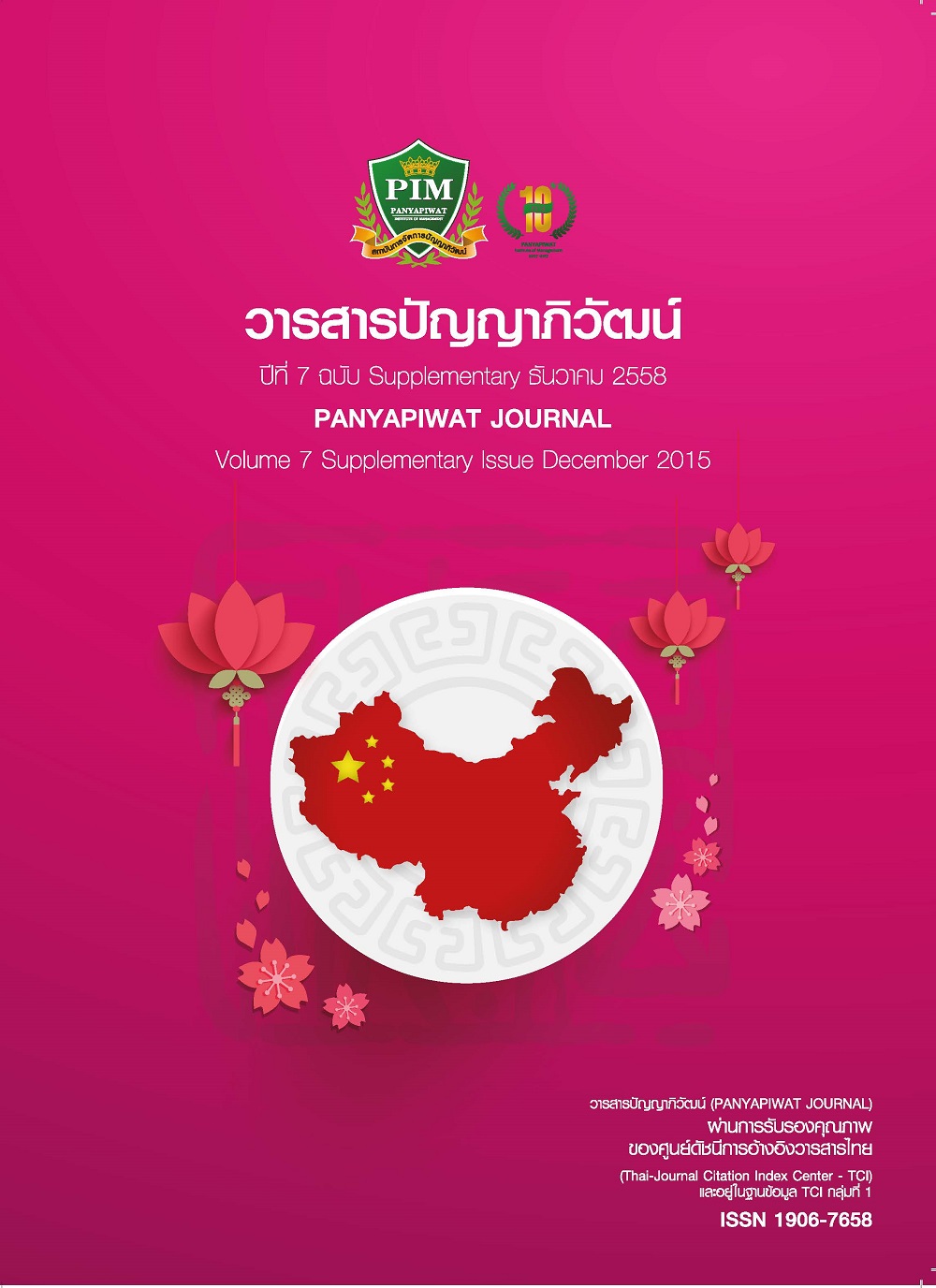创造力开发途径研究-以绘画训练为例
Main Article Content
บทคัดย่อ
本研究采用了实验法,用独立样本t检验方法,比较了实验组和对照组在五个创造力子变量在事先和事后测试中的差异。结果发现实验组实验前后有显著变化,而对照组前后没有显著差异。表明思维的流畅性,独创性,灵活性,敏感性,和洞察力等五个维度为基本表征的创造力,可以通过艺术教育的训练来提高,并且可以进而提高创新水平。其机制是,通过设计有关课程来提高学生的感知能力,想象能力,和表达能力。本研究验证了成年人培养创造力提高创新性的可行性,为提高成年人的创造力提供了一个有效的途径。
Used the experimental method, this study used the independent sample t test method, comparison of the experimental group and control group in five creative child variable differences in prior and after the test. The results showed that the experimental group have made significant changes before and after the experiment, and the control group no significant differences before and after. Show that thinking fluency, originality, flexibility, sensitivity, and insight into five dimensions as the basic characterization of creativity, can through the training to improve art education, and it can, in turn, improve the level of innovation. The mechanism is that, through the design the course to improve the students' awareness, imagination, and presentation skills. This study demonstrated the feasibility of cultivating creativity adults improve innovative; to improve the adults' creativity provides an effective way.
Article Details
“ข้าพเจ้าและผู้เขียนร่วม (ถ้ามี) ขอรับรองว่า บทความที่เสนอมานี้ยังไม่เคยได้รับการตีพิมพ์และไม่ได้อยู่ระหว่างกระบวนการพิจารณาลงตีพิมพ์ในวารสารหรือแหล่งเผยแพร่อื่นใด ข้าพเจ้าและผู้เขียนร่วมยอมรับหลักเกณฑ์การพิจารณาต้นฉบับ ทั้งยินยอมให้กองบรรณาธิการมีสิทธิ์พิจารณาและตรวจแก้ต้นฉบับได้ตามที่เห็นสมควร พร้อมนี้ขอมอบลิขสิทธิ์บทความที่ได้รับการตีพิมพ์ให้แก่สถาบันการจัดการปัญญาภิวัฒน์หากมีการฟ้องร้องเรื่องการละเมิดลิขสิทธิ์เกี่ยวกับภาพ กราฟ ข้อความส่วนใดส่วนหนึ่งและ/หรือข้อคิดเห็นที่ปรากฏในบทความข้าพเจ้าและผู้เขียนร่วมยินยอมรับผิดชอบแต่เพียงฝ่ายเดียว”
References
贝蒂,爱德华(2013),《快速绘画:开发创造力》,北方文艺出版社.
段培京(1986). 吉尔福特论创造力[J]. 《心理发展与教育》,2,42-45.
傳世侠(1995), 国外创造学与创造教育发展概况[J]. 《自然辩证法研究》,7,58-62.
傳世侠(2003), 创造学究竟是什么?[J]. 《科学学研究》,12,455-460.
J. P. 吉尔福德(1986). 关于创造力研究:回顾和展望[],《全球教育展望》25.
约瑟夫,熊彼特(2000). 《经济发展理论》 北京:商务印书馆,73-74.
金大劫(1988-01-3),大脑右半球意识功能的发现——R•W•斯佩里科学发现模式探讨《自然辩 证法研究》
施建农(1995), 创造性系统模型[J]. 《心理学动态》,3(3),1-5.
田友谊,(2006). 多元智能理论视野下的创造力培养[J]. 《现代教育科学》,11,16-20.
张庆林, R. J. Sternberg,(2002),《创造性研究手册》[M]. 成都:四川教育出版社,16-39.
Feldnhusen, J. F. (1995). Creativity: A Knowledge Base, Metacognitive Skills, and Personality Factors. Journal of Creative Behavior, 29(4), 255-268.
Gardner, H. (1985). Frames of Mind: The Theory of Multiple Intelligences. New York: Basic Books.
Hoppe, K. D. & Kyle, N. L. (1990). Dual Brain, Creativity, and Health. Creativity Research Journal,3(2), 150-157
Runco, M. A. (2004). Creativity. Annual Review of Psychology, 55, 657-687.
Translated Chinese References
Duan, P.J. (1986). Gill ford creativity theory. Journal of psychological development and education,2, 42-45.
Edward, B. (2013). Quick draw: development of creativity, 2013, the northern wenyi press.
Fu, S. X. (1995). Creative study abroad and create education development. Journal of dialectics of nature, 7, 58-62.
Fu, S. X. (2003). What exactly is a creative study?. Science, 12, 455-460.
Guilford, J. P. (1986). About creativity research: review and prospects. Global education outlook, 25.
Jin, D. J. (1988-01-3). Consciousness of right hemisphere functions found - r. W. sperry scientific
discovery model natural dialectics study.
Schumpeter, J. (2000). Beijing economic development theory. The commercial press, 73-74.
Shi, J. N. (1995). The creative system model. Journal of psychology, dynamic, 3(3), 1-5.
Tian, Y. Y. (2006). The perspective of the theory of multiple intelligences creativity culture.
Modern education science, 11, 16-20.
Zhang, Q. L. & Sternberg, R. J. (2002). Research on creative manual. Chengdu: sichuan education press.

